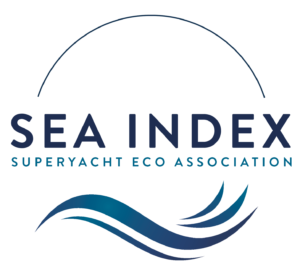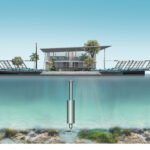Monaco Yacht Capital with a Sustainable Green Vision

From Sustainable Urbanism to Green Yacht Capital
Increasingly the Principality of Monaco is becoming recognised not just as the world’s green yachting capital but also a leading example of sustainable urbanism, presenting a green vision based on a love of and respect for the Mediterranean area.
Prince Albert II has proven time and again his commitment to environmental causes and he seems determined to improve the lives of those living in Monaco whilst promoting causes such as sustainable yachting and green yachts that protect the oceans.
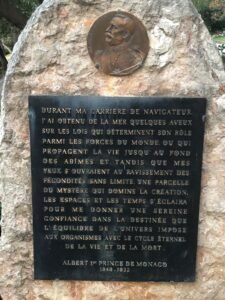
The Principality takes a top-down approach to its sustainability ethos and green yacht projects – quite literally. The push is being supported by the work of Prince Albert II via his Foundation.
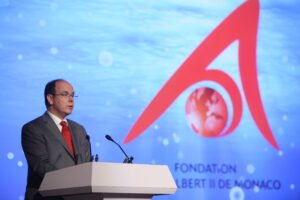
Established in 2006, the Prince Albert II of Monaco Foundation sets out to promote sustainable development on a global scale. It supports the initiatives of public and private organisations; in particular, those that focus on new technologies, research and development and socially aware practices.
That said, from a local’s perspective, many of the main actors of Monegasque life are engaged in sharing this vision, each playing an important role in the wider initiative.
Monaco a Capital of Yachting for Green Yachts
Monaco is a country that revolves around the sea in many ways, for its climate, for its uniqueness, for the quality of life. But most importantly, Monaco is The Capital of Yachting, and the Yacht Club of Monaco is the place where ideas and programmes, dedicated to the respect of the sea, and the culture of the sea, so charming and full of life, but so fragile today, come to life.
A most recent example of this, was the launch of the Superyacht Eco Association and the SEA Index, by the Yacht Club of Monaco with the full support of Prince Albert II, his Foundation and Credit Suisse, in collaboration with the Cluster Monaco Yachting and the YCM Captains Club.
The Superyacht Eco Association’s goal is to bring together shipyards, operators and owners with a strong desire to lead change and define objectives to reduce CO2 emissions, on a voluntary basis, and also to provide information, increase awareness and support with the implementation of solutions.
The ultimate long-term goal of the Monaco SEA Index is to become the world’s leading air pollution rating system for superyachts, which can also be extended to other sectors and thus lead to create a wider sustainability index.
https://superyachtecoindex.com/
Sustainable Energy for Monaco – the Green Yachting Capital
A very good case study is the SMEG and the SeaWergie project which I sum up the most relevant points here below but you can read in more detail by clicking on this link. , my source:
SMEG (Société Monégasque de l’Electricité et du Gaz) has been in charge of the Direct Heating and Cooling Networks (DHC) in the Principality of Monaco since 1897, in addition to having electricity and gas concessions. With SeaWergie they have developed one of the best sustainable development programmes.
SeaWergie is one of the most innovative energy production plants, which is connected to the waste treatment plant and to an underground seawater pumping station built into the Fontvielle seawall. The Energy is supplied through insulated networks installed beneath the road reaching the connected buildings.
This CHP plant (Combined Heat and Power plant) enables to recycle energy from waste in three ways, which is called the trigeneration principle:
- Electricity, partly reinjected into the grid
- Hot water, supplied through two heating networks to heat buildings and produce domestic hot water. With regard to heat production, it saves 6000 tons of CO2 emissions every year.
- Cooling water, supplied through a cooling network to cool service sector buildings, homes and factories.
Thanks to trigeneration, Monaco CHP plant is able to recycle energy from waste into cooling water for the city. This has two main benefits: to reduce electricity consumption and supply energy recovered from local waste.
Since 2013 a new seawater pumping station has been pumping at a depth of 110 metres and enabling to cool in a more sustainable and ecological way:
- Avoiding 100 000 m3 of freshwater consumption every year;
- Improving chillers’ energy efficiency;
- Removing the risk of legionella
DHC networks provide what I summarised above but the benefits don’t end there. They are well adapted to cities with buildings like Monaco, simplifying architectural design; they are less noisy than other units supplying similar functions and they guarantee a steady supply of energy.
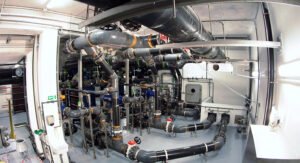
How it works
“Heating and cooling water are produced in the CHP plant and then supplied through DHC networks to the delivery substations.
Pipes are installed below the streets, mostly in accessible utility corridors, carrying hot and cold water to the connected buildings.
Every building connected to the networks is equipped with a heating and/or cooling delivery substation. It contains an exchanger which enable the transfer of energy from the networks to the buildings providing heating, domestic hot water and cooling.
SeaWergie operates as a large central heating system for a building complex or a district. It offers comfort and a steady supply for users while respecting the environment. DHC networks are a great tool to successfully face the challenge of the energy transition.”
By Paolo L. Bonaveri
To discuss BioBlu’s green yachting and sustainable refit services in Monaco, contact us here.
Comments are closed.
